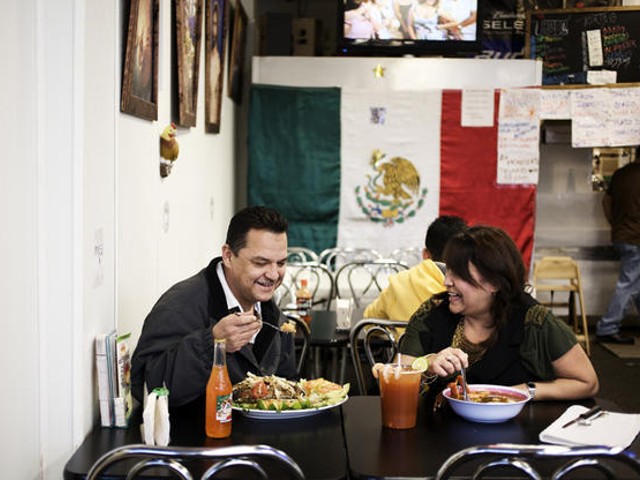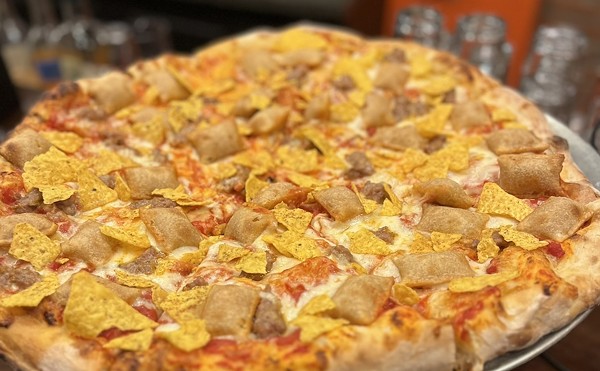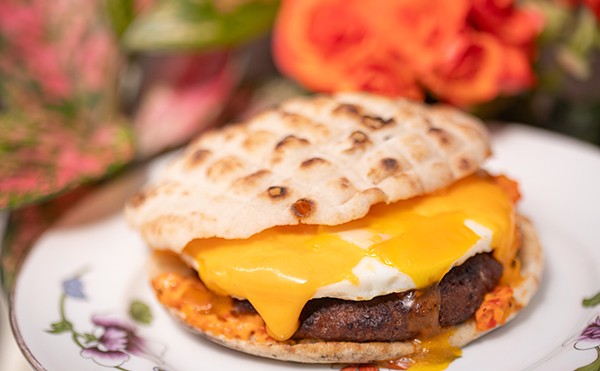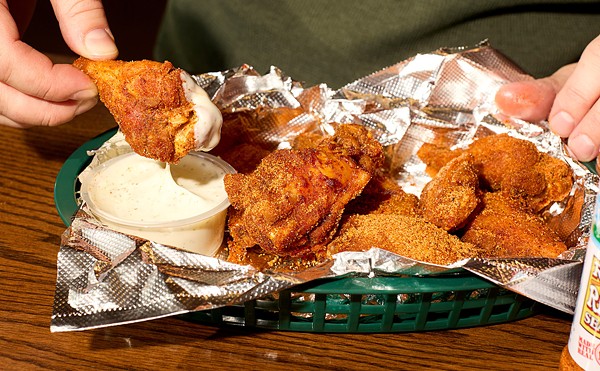Over the four and a half years that I've been reviewing restaurants in St. Louis, no single category has caused me more exhilaration and frustration alike than Mexican and Tex-Mex cuisine. There is true cause for excitement: a burgeoning subculture of hole-in-the-wall taquerias on Cherokee Street and near the airport that serve traditional street food and, on the other end of the spectrum, Milagro Modern Mexican in Webster Groves, the first serious local attempt to offer the contemporary, regional cuisine that Diana Kennedy and Rick Bayless have brought to prominence north of the border.
Still, we have a glut of combo-platter palaces — I don't have to tell you their names — dishing up the same refried beans, barely seasoned rice and sour-mix margaritas. That's not to say all of these places are without charm, and a few serve house specialties that are quite good. But in terms of advancing our knowledge of the rich foodways of our neighbors to the south and how they have intermingled with our own, they do only a marginally better job than, well, Taco Bell.
At first glance Rosalita's Cantina, from loft-district impresarios Tim and Seamus McGowan of McGowan Brothers Development, would seem to edge closer to the white-tablecloth approach. The build-out of this four-month-old Washington Avenue restaurant is impressive. As at Prime 1000, the steak house down the block that I reviewed last week, Rosalita's conveys the most attractive aspects of loft-district décor — exposed brick, high ceilings — but also manages to showcase an individual personality. In this case the most striking design feature is the blocks of small turquoise tiles that break up the brick here and there. The color might be more evocative of the American southwest than of Mexico, but the effect is vibrant and winning.
As is customary for loft-district restaurants, Rosalita's is roomy. You enter into the bar, whose counter dominates the center of the large room, with booth seating to one side and bar tables to the other. Beyond the bar is the dining room: freestanding tables and, against one wall, large, cushy booths. A mezzanine level overlooks the dining room on two sides. Wherever you end up sitting, order a margarita — made, thank God, with only the holy trinity: tequila, Grand Marnier and lime juice — to savor while you read the menu.
Here's where Rosalita's conflicted personality begins to reveal itself. There are entrées you wouldn't expect to find in a burritoquesadillachimichanga joint, such as the duck leg and thigh coated in a rich, smoky mole sauce and roasted. But there are also burritos, quesadillas and chimichangas. The guacamole has a lovely bite of lime juice and luscious chunks of avocado. The chile con queso is straight-up melted white American cheese. And so on.
The selection of what the menu calls "Classic" entrées does yield some satisfying dishes, if no revelations. The burrito is tremendous in size, even longer and fatter than the monsters served at Qdoba or Chipotle (albeit at nearly double the price). You choose a protein (steak, ground beef, shrimp, chicken) or vegetables to pair with generous servings of rice, beans and melted cheese. I tried the steak, which brought small, tender pieces of meat seasoned in the manner of carne asada.
You can also build your own enchilada by choosing a filling and a sauce. I opted for the tinga chicken inside my enchilada and the creamy poblano sauce atop it. Though this was a welcome change from the typical enchilada topped with boring ranchero sauce, neither the chicken nor the sauce offered much pop.
A few items might catch your eye as you read the menu. Listed among the appetizers, for example, is a jalapeño dish that features whole peppers that are stuffed with a mixture of shrimp, corn, garlic and Oaxaca cheese, then roasted. These are served with a mango-habanero sauce that's tastier — and much hotter — than the pedestrian salsa that's delivered with your complimentary tortilla chips. For the most part, though, the more-intriguing dishes are grouped under the heading "Specialty Entrées." There's that duck mole, for one, and a welcome nod to Mexico's regional variations that takes the form of "Dorado Oaxaca," a mahi-mahi fillet wrapped in a banana leaf and spiked with that nice mango-habanero sauce.
More focus on these "Specialty" dishes could separate Rosalita's from the pack. As this point, though, too much of the menu consists of the same-old — fajitas and tostadas — or preparations that simply aren't distinctive. "Pork Rancherito" is three thick medallions of pork tenderloin in a tomatillo-based sauce. The sauce is brightly flavored and tangy — exactly what you would expect from a tomatillo-based sauce, and little more. "Shrimp Diablo," plump shrimp sautéed with jalapeños, onions and green bell peppers, is spicy but much too salty.
The flatiron steak is a strange amalgam of concepts. Flatiron is a flavorful (though not especially tender) cut that has become trendy over the past decade. Here it comes topped with garlic butter and what the menu describes as a "jalapeño ranch sauce." I have no idea what a jalapeño-ranch sauce should taste like, but this one contributed neither heat nor tang, and its bland character muted any flavor the garlic butter might have added.
The sides are unimaginative across the board: refried beans, charro beans and grilled vegetables. One standout could be the corn masa, both thicker and moister than cornbread, but in its current form cloyingly sweet — more like a dessert than a complement to the main dish.
Five years ago — or even two or three years ago — a place like Rosalita's would have been a step forward for Mexican dining in St. Louis. (A small step, but let's not split hairs.) As it is, the preparation and presentation here beat most of the area's Mexican and Tex-Mex restaurants, and if the McGowan brothers are merely looking to add to their already successful loft-district portfolio, they probably won't be disappointed.
If, on the other hand, they want Rosalita's to move beyond the run-of-the-mill Mexican and Tex-Mex cuisine that crowds St. Louis, they've got work to do, lest they find themselves left behind.





